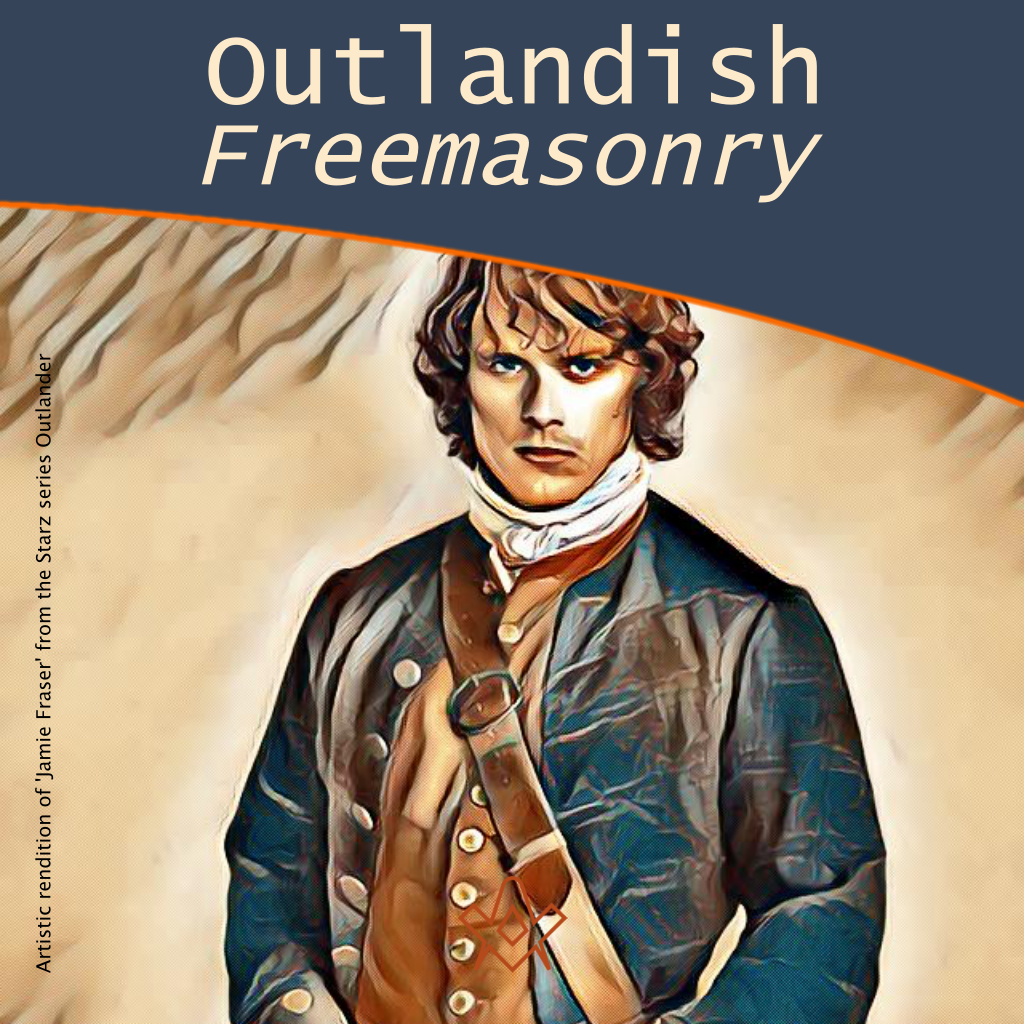For those unfamiliar with the acclaimed books and television series, Outlander is a Starz original series based on the Outlander books written by Diana Gabaldon.
Inside its pages, we follow the story of Claire Randall, a married combat nurse from 1945.
She is mysteriously transported back in time to 1743, in the Highlands of Scotland, where she is immediately thrown into a strange world where her life is threatened.
When she is forced to marry Jamie Fraser, a chivalrous and romantic young Scottish warrior, a passionate affair ensues.
The Outlander series is a juggernaut of genres seamlessly combining history, science fiction, adventure, and romance all into one epic tale. Did I also mention that it has Freemasons in it?
As Jamie’s Jamaican plantation overseer Kenneth MacIver says, ‘I’d like to introduce you to a Freemason who’s acquainted with almost everyone on island and may know something of your nephew.’
Throughout the course of Gabaldon’s books we discover at least eight men identified as Freemasons – Jared and Jamie Fraser, Lionel Menzies, Roger MacKenzie, Robert Cameron, Thomas Christie, Governor Colonel Harry Quarry, and physician Daniel Rawlings.
Although I won’t be writing in detail about each of these men individually except as to how they relate to the main character, Jamie Fraser; I thought it important to mention how each of these characters influences Jamie Fraser decisions all through the series.
The main protagonist, James Alexander Malcolm MacKenzie Fraser, is a Scottish soldier and landowner.
He is well-educated and has a knack for learning languages. Raised to be the future Laird of Lallybroch, Scotland; he is a natural leader, from the homestead to the battlefield.
He first meets Claire Randall on his return home to Scotland from France.
Jamie is forced to marry Claire to save her life. Intelligent, principled, and by 18th century standards, educated and worldly; he is a natural leader of men.
He has no political ambitions or desire for battlefield glories. Instead, he wishes to remove the price he has on his head and return to his family’s ancestral farm.
So, what is the significance of Jamie being a Freemason? Why did he decide to join the Freemasons while in prison? Did this cause any conflict with his strong Catholic faith?
Easy answer first: How and why Jamie was made a Freemason.
In Diana Gabaldon’s fifth book, The Fiery Cross, we learn that Jamie Fraser is made an Apprentice Mason by Governor Colonel Harry Quarry in his Masonic lodge in 1753, while imprisoned in Ardsmuir prison.
Jamie becomes a Master Mason, and he makes his own lodge with several of his fellow prisoners, one of whom is Tom Christie.
Tom is head of the Protestant faction in the prison, and Jamie is head of the Catholic faction. Tensions had been rising steadily between these two disparate groups, and it was through Freemasonry that am amiable solution was finally reached.
Soon, all the men in the prison were made apprentices, and tensions were abated.
Governor Quarry was head of a small Masonic military lodge at the prison, composed of the officers of the garrison. One of their members had died recently, though, leaving them one man short of the required seven men to open a lodge.
Quarry had considered the situation, and after some cautiously exploratory conversation on the matter, invited Fraser to join them.
A gentleman was a gentleman, after all, Jacobite or no.
‘So, Quarry made him (Fraser,) and he moved from Apprentice to Fellow Craft in a month’s time and was a Master himself a month after that—and that was when he chose to tell us of it.
And so, we founded a new lodge that night, the seven of us—Ardsmuir Lodge Number Two.’
Later in the book, we learn of these seven men, including Tom Christie becoming oath-bound to help Jamie Fraser despite Christie being a Protestant and Jamie a Jacobite Catholic:
‘Aye. You six—and Christie. Tom Christie the Protestant. And Christie, stiff-necked but honorable, sworn to the Mason’s oaths, would have had no choice, but been obliged to accept Fraser and his Catholics as brethren…’
‘To start with. Within three months, though, every man in the cells was made Apprentice. And there wasna (sic) so much trouble after that.’
[Quotes: The Fiery Cross, 2005, pp.213-14]
And there wouldn’t have been any more dissension since Freemasons hold as basic principles the notions of equality—so whether he was a gentleman, crofter (a person who works a small, rented farm), fisherman, or laird; such distinctions would not have been taken account of in lodge—and tolerance.
And the rule of no discussion of politics or religion amongst the brethren.
What about the potential conflict of Jamie Fraser being a Freemason and a Catholic? Didn’t the Pope forbid members from joining the fraternity? The short answer is yes, but the Catholic Church did not condemn membership in Freemasonry until Pope Clement XII issued his Papal Bull, In Eminenti, in April 1738.
His primary objection to Freemasonry was that it fostered notions of democratic over autocratic government.
This was in conflict with the Church’s long-standing support of autocratic monarchs.
Speculative Freemasonry was so strongly entrenched in Scotland, where it began, that most Freemasons simply ignored the Papal condemnation.
King James VI of Scotland was a Freemason and a Catholic, and so were many of the courtiers and Catholic nobility.

King James I of England and VI of Scotland, as King of Scotland. Engraving, 18– (?) after R. Elstrack..
IMAGE LINKED: Wellcome Collection Attribution 4.0 International (CC BY 4.0)
There were two opposing types of Freemasonry in the 1700s, the Ancients and the Moderns.
The Tories who supported the Stuart cause tended to be of the ‘Ancients’ type of Freemasonry, which included Scottish and Irish Freemasonry.
This is where most Catholic Freemasons were found. While the Whigs, supporters of the Protestant House of Hanover, tended to be of the ‘Moderns’ type of Freemasonry. These were the London stuffed shirts.
Many, many Jacobites, mostly Catholic, especially among the Scottish nobility, were Freemasons, and continued to be so well into the 19th century.
Although Freemasonry is not a major theme in Gabaldon’s books, it does provide further insight and background into Jamie Fraser’s character as a man of moral principles that guide his dealings throughout the series.
Jamie uses his Masonic connections to achieve his goals and motivations in his fight for Scottish independence and his own personal struggles, allowing the principles of Freemasonry to guide his faith and action.
Although Jamie is ostensibly a Catholic, he refuses to recognize the Pope’s ban on Catholics becoming Masons.
Jamie takes advantage of being a Freemason in order to unite all the men in the prison together.
This also had the desired effect of making Jamie the leader of all the inmates which was also his intent.
Practically, it was the most effective way of ending the religious strife within the prison, since it got the men to think and act as a cohesive unit rather than as individuals.
Without his membership in our gentle Craft, he would have never have been able to the broker peace between the Catholics and Protestants in Ardsmuir prison to become a leader of men.
We learn several years later that when Tom Christie uses the Masonic grip to introduce himself to Roger Mackenzie, a fellow Freemason, he instantly recognizes it.
The text describes that although it’s been a while since Roger has associated with other Freemasons, he still remembers what the Mason’s grip feels like when he receives it.
This simple grip allows Mackenzie to deduce that Christie is a Mason, and therefore a man of sound moral character.
It also causes MacKenzie to connect the dots between Tom and Jamie to suss out that Jamie Fraser must be indeed a Freemason as well.
Later, in book five (page 209), we read another passage where Jamie and Claire are discussing a Masonic Compass left by Robert Cameron who is a member of the same Masonic lodge as Roger MacKenzie.
Although Jamie shrugs when Claire asks if Cameron is a Freemason, he does confide in her that physician Daniel Rawlings is one and thereby confirms Claire’s suspicions that Cameron was one as well.
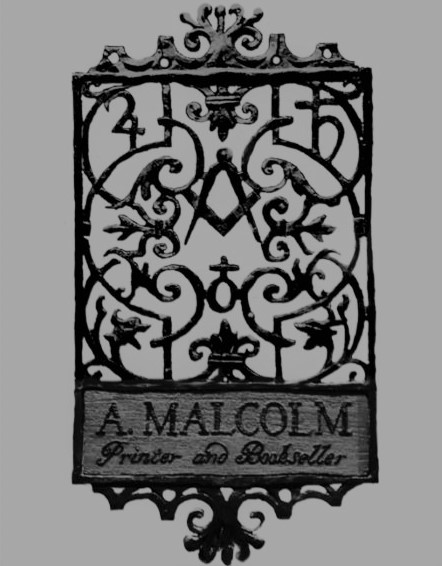
Artistic rendering inspired by the sign from A. Malcolm’s print shop
IMAGE CREDIT: author
Though Jamie doesn’t speak publicly about his association in the Freemason’s, he does advertise his membership in the fraternity by the symbols he uses on his print shop sign.
Of course, symbols are subjective—the meanings change depending on who is using them, who is reading them and how they are being used.
Symbols were often used as secret code or replaced written words in populations that did not know how to read and write.
So, A. Malcolm’s print shop sign was an advertisement, a means of conveying who he was to his customers, (Freemasons included) and he imbued his shop sign with symbols—both supernatural and religious—that had meaning in his life.
In the center of the shop sign, we see the square and compass, a widely used, easily identifiable Freemason symbol familiar to all Freemasons.
It is a clever way for Jamie to advertise his status as a Freemason and as a signal that it was safe for other Freemasons to patronize his print shop, to keep the secrets of Freemasonry safe from outsiders.
The square and compass also come together to form the letters, A and M, for Jamie’s nom de guerre, Alexander Malcolm.
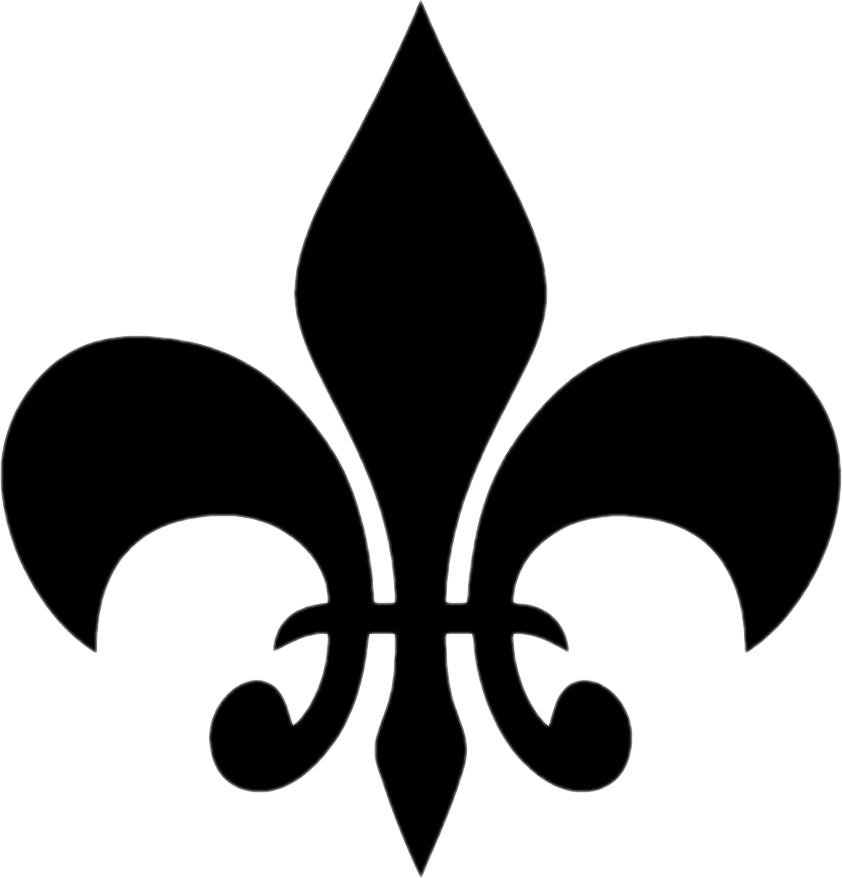
Fleur de lis
Also, something less obvious than the square and compasses are the fleur de lis adorning the sign.
In Catholicism, the fleur de lis represents the holy trinity, the Virgin Mary, and the Archangel Gabriel.
But in paganism and throughout antiquity, most interesting of all is that the fleur de lis is often interpreted as a deconstructed bee.
We as Masons know that the honeybee has a special meaning to our fraternity; the bee and the beehive have long been symbols of industry and regeneration, wisdom, and obedience, with an ancient place in Egyptian, Roman, and Christian symbolism.
The hive is often seen in Masonic illustrations of the 18th and 19th century and both Clovis and Napoleon adopted the bee as their symbol.
It is this author’s opinion that Jamie was representing both his Catholic and Masonic heritage by employing the fleurs de lis in his print shop sign.
There are many other signs and symbols in the print sign relating to alchemy, including Jamie’s family name and Scottish heritage.
On the upper supports from which the Print Shop sign hangs, we see a few floral flourishes, a bloom that appears to be a strawberry blossom with trefoil leaves.
The significance of the strawberry plant to Clan Fraser is well known since the Fraser surname is thought to be derived from the French word, fraisier (strawberry).
Strawberries in antiquity were used by stone masons in architecture to symbolize perfection and righteousness further connecting the Fraser family to our gentle craft.
Although thematically Freemasonry is not central to the books and television series in Outlander, it does add an interesting level of complexity and insight into Jamie Fraser’s moral character.
Gabaldon’s books describe in detail how James Fraser and all the rest of the prisoners at Ardsmuir Prison became freemasons.
They also form the second lodge in the prison called Ardsmuir Lodge Number 2. [The Fiery Cross, pp. 824-25]
By using his wits and connections to the Masonic order, Jamie is able to arise to a position of leadership in Ardsmuir prison and is able to make lasting relationships with other men of means, furthering his fortunes and goals in life.
After fleeing prison, he seeks safe passage to Europe from a cousin who owns a vineyard in France.
The cousin tests him by saying ‘We meet upon the level.’ To which Jamie replies ‘and we part upon the square.’ [Voyager p. 514]
For those who haven’t read Diana Gabaldon’s Outlander series, her writing style is a rich tapestry of compelling interwoven characters set against the backdrop of the fight for Scottish Independence in the 1700s.
I highly recommend adding it to your reading list!
Note: This article originally appeared in The Northern Lights magazine (March 2020) – reproduced with permission of the author.
Article by: Martin Bogardus
Bro. Martin Bogardus, PM hails from New Jersey and is a poet, writer and Associate Editor for The New Jersey Freemason magazine.
He is currently serving as Worshipful Master at the New Jersey Lodge of Masonic Research and Education, No. 1786.
Outlander season 6, episode 1
Returns to Ardsmuir Prison where Jamie becomes a Freemason.
Outlander season 6, episode 1 returns to 1753, a flashback to Jamie’s time at Ardsmuir Prison, were he becomes a Freemason. It is set some years after the defeat at the Battle of Culloden (1746).
Jamie is seen making an alliance with the Governor, in an effort to bring peace to the prison.

The Battle of Culloden was the final confrontation of the Jacobite rising of 1745. On 16 April 1746, the Jacobite army of Charles Edward Stuart was decisively defeated by a British government force under Prince William Augustus, Duke of Cumberland, on Drummossie Moor near Inverness in the Scottish Highlands. It was the last pitched battle fought on British soil.
– Source Wikipedia
The first episode of Outlander Season 6 was officially available to viewers on Sunday, March 6, 2022.
The 90-minute-premiere, called ‘Echoes’, was released on Starz at 9pm, then added to the StarzPlay app.
[Edit – 10 March 2022]

Complete Diana Gabaldon Outlander Series Eight Book Hardcover Set
By: Diana Gabaldon
Complete Diana Gabaldon’s Outlander Series – 8 Book Large Paperback Set [Outlander, Voyager, Dragonfly in Amber, Drums of Autumn, Fiery Cross, A Breath of Snow and Ashes, An Echo in the Bone, Written in My Own Heart’s Blood


Recent Articles: masonic history
 Protestantism and Masonic Influence in Brazil Discover the untold story of how Freemasons helped Southern Americans immigrate to Brazil post-Civil War, fostering economic and educational growth in Santa Bárbara d’Oeste and Americana. Learn about their pivotal role in establishing Protestant churches and ensuring the secularity of the Brazilian State amidst a Catholic-dominated society. |
 Explore the proper use of the sacred word in Brazilian Freemasonry through an analysis of Masonic literature and Bible translations. Uncover the errors in pronunciation and the need for corrections to maintain liturgical coherence in rituals. Discover insights on Masonry, rituals, and the Hebrew word Boaz. |
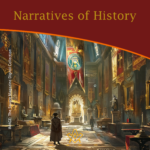 Narratives of History |
 A Very Royal Sesquicentenary |
 Unveiling the Enigma: Discover the Royal Society's Legacy and its Impact on Science. Delve into the fascinating history of the Royal Society, the prestigious UK academy shaping scientific progress since 1660. Explore its pivotal role in advancing knowledge, fostering collaboration, and unlocking the secrets of the universe. Prepare to be amazed! |
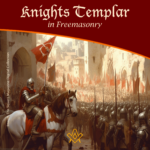 Knights Templar in Freemasonry Uncover the Mysteries of the Knights Templar in Freemasonry! Delve into the intriguing world where chivalry and symbolism intertwine. Discover the captivating rituals and ancient secrets behind the Knights Templar Masonic Orders. Explore the historical connection and delve into the enigmatic narratives that continue to fascinate enthusiasts today. Unveil the hidden truths now! |
 The Royal Arch stands as the rainbow of promise in the Ritual; it stands as the promise of the resurrection; of that which was lost and that it shall be recovered. The question arises as to whether the Master's Word was originally communicated in the Third Degree? On this point there is some diversity of opinion. Originally published in 1915, this insight into the Fourth Degree – the Holy Royal Arch – is as relevant today as it was over 100 years ago. |
 Unveiling the Mysteries of Druidism: Discover the Intriguing Connection with Freemasonry. Explore the ancient spiritual practice of Druidism and its fascinating ties to the enigmatic world of Freemasonry. Delve into the shared symbolism and rituals that have captivated minds for centuries. Unlock the secrets of these intertwined traditions today! |
 Uncover the legacy of freestone masons and their pivotal role in crafting medieval cathedrals. Discover the artistry behind their techniques, the hierarchy within their craft, and the enduring impact of their intricate carvings. A deep dive into the world of these master craftsmen awaits you! |
 Unearth the intriguing journey from Vincha Culture to Freemasonry. Discover how ancient building methods intertwine with modern Masonic philosophies. This exploration will shed light on the fascinating link between the Serbian term "shestarenye" and the symbolic significance of the compass in Freemasonry. |
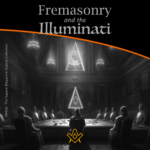 Freemasonry and the Illuminati Unravel the enigmatic world of Freemasonry and the Illuminati in our latest exposé. Dive into centuries-old mysteries, debunk conspiracy theories, and discover the truth behind these elusive societies. Are they puppet masters or mere myths? Join us as we dissect history and fact from fiction. |
 The Île des Templiers, or “Island of the Templars” lies within a leafy park in Paris. The execution site of Jacques du Molay, the last Grand Master of the Knights’ Templar bears a plaque with the epitaph ‘A cet endroit / Jacques de Molay / Dernier grand maître / de l'ordre du temple / a été brûlé le 18 Mars 1314’ (‘In this location / Jacques de Molay / Last grand master / of the order of the temple / was burned on 18 March 1314’) |
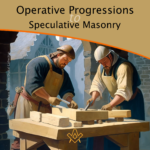 Operative Progressions to Speculative Masonry Both Operative and Speculative Masonry are an important part of the modern fraternity of Freemasonry, which combines elements of both traditions. Today, Freemasonry is a fraternity that is open to men of good character, who are interested in personal development and in making a positive contribution to their communities. |
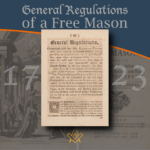 General Regulations of a Free Mason, 1723 General Regulations of a Free Mason as contained in Anderson's Constitutions of the Freemasons, published 1723. the Regulations are of great historical interest. Compiled by George Payne, the second Grand Master of the Premier Grand Lodge of England, they were printed in 1722/3, thus published just over five years after the formation of the Grand Lodge 1717. |
 The Genesis of the 1723 Book of Constitutions 2023, marks the three hundredth anniversary of the publication of the first printed Book of Constitutions of the Grand Lodge formally established in London two years previously. This is an anniversary whose significance extends beyond freemasonry. A paper by Andrew Prescott |
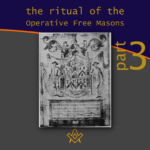 The Ritual of the Operative Free Masons - P3 Existing Operative Free Masons. The ritual I am about to refer, is that of "The Worshipful Society of Free Masons, Rough Masons, Wallers, Slaters, Paviors, Plaisterers, and Bricklayers." By Thomas Carr, M.D., P. M. Honorary Member of the Guild of Operative Free Masons |
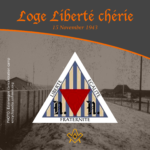 Liberté chérie was a Masonic Lodge founded in 1943 by Belgian Resistance fighters and other political prisoners at Esterwegen concentration camp. It was one of the few lodges of Freemasons founded within a Nazi concentration camp during the Second World War. |
 The Ritual of the Operative Free Masons - P2 If anyone doubts the fact that the formation of Speculative Free Masonry was due to and based upon Operative Free Masonry, it is quite easy to convince him of his error if he will only study the first Book of Constitutions. By Thomas Carr, M.D., P. M. Honorary Member of the Guild of Operative Free Masons |
 In 1881, Freemasonry rose from the ashes of a fire in the mining town of Kokomo, Summit County, Colorado. Corinthian Lodge No. 42, along with Kokomo, no longer exists but it holds the record of having been – at an elevation of 10,618 feet – the highest Masonic Lodge in the USA. |
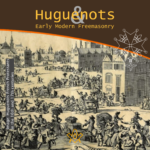 The Huguenots and Early Modern Freemasonry The Huguenots influence in the development of early modern Freemasonry at the time of the formation of the Grand Lodge in London around 1717 / 1723. |
 November is a month of reflection – perhaps due to the fact that we are getting close to the years' end – but also because Remembrance / Armistice Day (11 November) is a significant date in most countries' diaries. |
 Speculative Freemasonry, as practise by Grand Lodge of England, was officially born just over three hundred years ago, is today an international organisation, counting over six million members. It has been subjected to persecution, suppression, and abolition throughout its history. In its infancy, only a couple of decades after its official birth, it had already become a target. |
 The Ritual of the Operative Free Masons - P1 The original paper was written, first, to prove that Speculative Free Masonry was derived from Operative Free Masonry; second, to give some account of the Operative Free Masons, of their Ritual, and of their customs. By Thomas Carr, M.D., P. M. Honorary Member of the Guild of Operative Free Masons |
 American Fraternalism in the 19th and Early 20th Centuries The late 19th and early 20th centuries in the United States has been called the "Golden Age of Fraternalism." How did this come about and why was the idea of joining a fraternal organization so popular? We will explore this question and examine the regalia used by many fraternal organizations in this period. |
 Societas Draconistarum, meaning "Society of the Dragonists"– was a chivalric Order for selected nobility, founded in 1408 by Sigismund von Luxembourg, who through marriage became the King of Hungary (1387–1437) and later Holy Roman Emperor. The Order was fashioned after the military orders of the Crusades, requiring its initiates to defend the cross and fight the enemies of Christianity, in particular the Ottoman Empire. |
 The Perjured Free Mason Detected Was Samuel Prichard a perjured individual, or simply a misguided Freemason? Prichard's book "Free Masonry Dissected" published in 1730, is now used by many Masonic historians as a source of reference with regards to the introduction of the third degree into the Craft. But at the time it was published in 1730, it was not so well received by members of the Grand Lodge of England. |
 17th century and the Holy Royal Arch This article focuses on a period of transition between a point in time when we can safely and historically identify the first formation of what could be called as the ‘Royal Arch’ and the historical events that have preceded it. |
 Most Freemasons have heard the terms 'Operative' and 'Speculative' Masons, and this article helps to understand the difference: |
 Roberts' Constitutions of Freemasonry 1722 Published a year before Anderson's Constitutions, The Old Constitutions Belonging to the Ancient and Honourable SOCIETY OF Free and Accepted MASONS. Originally printed in London England; Sold by J. Roberts, in Warwick-Lane, MDCCXXII.(1722) |
 From 'Songs of religion and life', 1876 by John Stuart Blackie (1809-1895) |
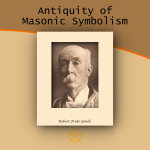 On the Antiquity of Masonic Symbolism Is the Symbolism of Masonry an inheritance derived from the old Masons who flourished before the era of the Grand Lodges (1717); or has it been borrowed from the Rosicrucians or others, after 1717? |
 Mason's Marks – from Egypt to Europe? Mason's marks have been a source of intrigue, not only to Freemasons but to historians and archaeologists. The use of simple pictograms have been employed for millennia by artisans to identify their work. But where did they originate and why? |
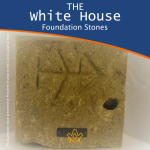 The White House Foundation Stones Further to the articles in our series on the history of the stone masons, we have a rather intriguing addition. During the 1950's renovation of the White House, President Truman retrieved more than 100 stone blocks with stonemasons marks. |
 What the Goose and Gridiron Tavern is in the ancient annals of London Freemasonry, The Green Dragon Tavern is to the memories of the Free-mason, of Boston and New England. |
 Auschwitz concentration camp: video photo article taken in 2013 |
 There are two things of importance happening this day - 27 January |
 Two approaches regarding the understanding of Freemasonry |
 Masonic Research in England c1930 An article which appeared in an American Masonic magazine, c1930 and which was reproduced in England, provoking a little controversy. |
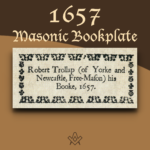 Masonic bookplates the ‘Brethren’s spiritual coats of arms and marks’ |
 The Unlawful Societies Act of 1799 Rebellious Freemasons and the 21st century |
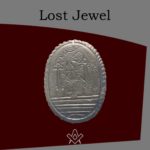 In 1912, Sarah Dowd of Dromore, Ireland, found a Masonic jewel dated 1517 - a date two hundred years before the establishment of Grand Lodge... |
 Freemasonry and Fascist Regime Interesting speech by the famous historian Prof. Aldo A. Mola, who links the fascist regime with the Masonic Associations. |
 Was famous Russian poet Alexander Pushkin a Freemason? And if so, was he a member of the lodge ‘for which all the lodges in Russia were destroyed’? |
 The Importance of Masonic Research Why is accurate - or authentic - Masonic research so important? The importance of making a daily advancement in Masonic knowledge is something that The Square is passionate about promoting. |
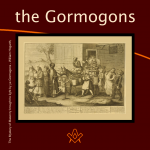 The Antient Noble Order of the Gormogons had a brief existence in the eighteenth century; they left few records or accomplishments, |
masonic knowledge
to be a better citizen of the world
share the square with two brothers

click image to open email app on mobile device


